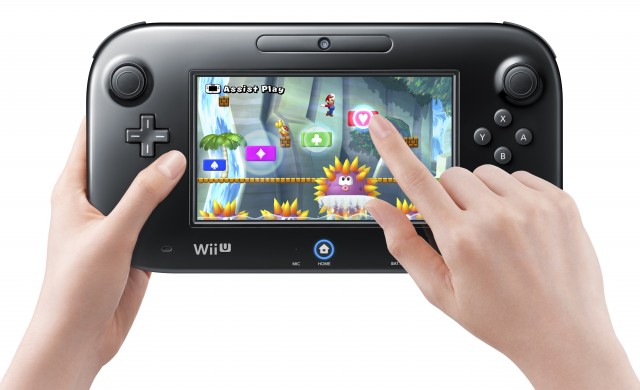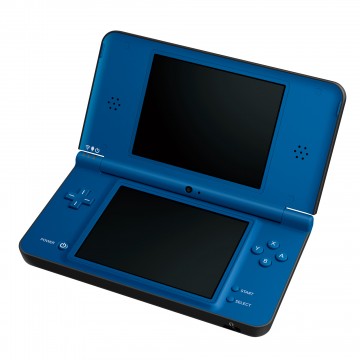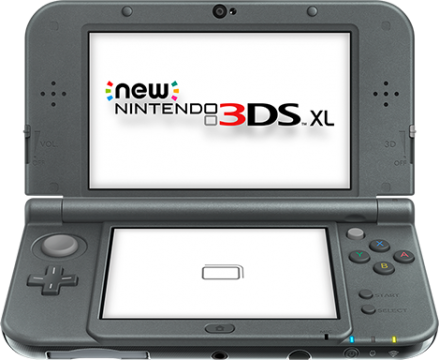
I can vividly remember how impressive the DS touch screen and stylus combo was when I first popped open Nintendo’s then-newest handheld. DS was bulky and far from sleek, especially compared to Game Boy Advance SP, whose clamshell design caught the attention of many an onlooker when played on a bus or in a coffee shop. It’s not that DS was ugly, so to speak, but visually it left a lot to be desired. What was more, it seemed incredibly quirky having two screens. Why? What point was there to having two, and making one a touch screen, at that? Those sorts of questions plagued some gamers who were simultaneously curious and reluctant about Nintendo’s newest endeavor.
That hesitation quickly melted once Nintendo started providing software that perfectly illustrated why the seemingly gratuitous accouterments weren’t merely for show, but actually facilitated new and creative gameplay. Suddenly, players had a tertiary method of interacting with their games to accompany the standard D-Pad and face buttons. Games like WarioWare: Touched!, Kirby Canvas Curse, Meteos, and many more provided visceral thrills by letting players tap, swipe, and drag across the touch screen with their styluses. It might seem strange in a world full of smartphones whose sole method of input comes from touch capacitive screens, but when DS debuted in 2004, it was like a sneak peek at the future.
iPhone wouldn’t hit the market until 2007 (and some argue that Nintendo’s successful implementation of the touch screen is what prompted Apple to include one for its revolutionary phone), which meant that outside of Palm’s PDA devices, DS was one of the first widespread commercial implementations of a touch screen. My personal favorite memory of using the DS stylus was when playing Metroid Prime: Hunters. Before missions, the touch screen was littered with menu options that had to be tapped and manipulated via touch. It felt like I was actually in Samus’s Gunship as I sat and adjusted settings for no other reason than to fiddle with the touch screen.

For game designers, as mentioned above, the DS touch screen and stylus represented a new way to think about playing. Sure, many actions done with the touch screen on a DS could have been accomplished using the D-Pad and traditional buttons presses, but the first time players popped a balloon with the tip of the stylus, everything changed. Players began to expect a greater variety of experiences, or bare minimum new ways of doing old things, and game developers delivered. With the transition to 3DS and Wii U, however, things seem to have changed again.
For a while, “second screen experiences” was the buzz phrase of the gaming industry. Wii had been a smash hit, and though the console lost a great deal of steam toward the end of its lifecycle, gamers and game makers alike were on tenterhooks waiting to see what Nintendo’s next system would be like. Wii U’s enormous touch screen controller was an obvious extension of DS’s design, and though the new console’s E3 debut was less than smooth, it got everyone thinking. PlayStation 4 and PlayStation Vita, along with Xbox One and, well, anything running SmartGlass with a touch screen, were poised to counter Nintendo’s newest idea. At least, until Wii U stumbled and suddenly Nintendo was no longer sitting in the throne.
In the years since, Sony has reclaimed the top spot and is at odds with Microsoft, and as a result “second screen experiences” are really only being championed by the concept’s pioneer, Nintendo. There are those who never fully embraced touch gaming, for a variety of reasons, but I’ve always been charmed by it, especially when done well. Nintendo has developed some of the better examples of touch-based games over the years, but companies like Level-5 with its Professor Layton series have proven time and again that anyone with vision and skill can bring something unique to the industry. Unfortunately, it feels more and more like the ingenuity and creative spark that defined a good chunk of the earlier days of touch gaming has started to fade a bit.

In the past few years, it’s become more common to see the bottom screen of a 3DS being used for a map or inventory control and little else. There are still some great touch-based experiences on Nintendo’s handheld, of course: Kid Icarus: Uprising, Virtue’s Last Reward, Rhythm Thief, and others. Even those games, though, are more from the beginning of 3DS’s time on the market, with the last couple of years seeing fewer touch titles, or put more accurately, titles which use the touch screen in a creative way. It’s something I struggle with, because clearly 3DS isn’t suffering from a lack of great games– frankly, I consider it the best system on the market, at the moment. The argument can be made that a general absence of new ideas for touch gaming isn’t all that big a deal.
When I see games like Kirby and the Rainbow Curse, though, it’s a reminder that the industry is a much more interesting place when every tool at a developer’s disposal is being used. While 3DS has seen a slowdown in creative stylus use when compared to DS, Wii U is proving to be very fertile for new ideas. Rainbow Curse is an improvement over the already incredible Canvas Curse. Captain Toad utilized the GamePad’s touch screen in very fun (if subtle) ways. 3D art programs on the console like SDK Paint and Art Academy have provided yet another outlet for artists to express themselves. The Wonderful 101, though imperfect, was a brilliant adaptation of the now over ten year old concept that DS introduced to the world.
So is the stylus dead? I would say no. The market might be different, and we might be seeing the touch screen being used more predictably than when it was first introduced, but with games like Rainbow Curse it’s obvious that the tank is far from empty. Smartphones and free-to-play cash grab titles might be tarnishing touch gaming’s reputation of late, but it’s something that still has the potential for big and great new things in the video game world.




 ShareThis
ShareThis







WarioWare: Touched! was one of DS games I got at launch and was the perfect way of showing off what the handheld could do!
I think that developers use touchscreen controls more subtly now though. We’ve got over the mad rush to use them for everything, just like we have with motion controls. Wii U could definitely do with more games that make use of the GamePad screen though – I’m really looking forward to playing Kirby and the Rainbow Curse for that reason.
Lots of games which primarily use conventional controls also subtly use touch control, for both the 3DS and Wii U. It certainly makes menu navigation a lot less complicated, especially in certain menu-heavy genres like RPG’s. There are also games and genres which heavily use touch control in ways that we don’t really notice. Think Fire Emblem: Awakening, Advance Wars, or any number of DS/3DS turn-based strategy games.
As for games that primarily use touch control for realtime gameplay, I think proper implementation is an art. It’s very easy to do wrong. When you use novel control schemes poorly, you create mediocre titles that would be improved if they were more conventional. Perhaps it’s a good thing if we see fewer but better titles for a while, games which establishes proper best practices for using those controls within their genre.
I’m not sure if we’re swinging too far in that direction. I certainly doubt that touch screens are going away on Nintendo consoles. And if Nintendo is truly investing so much on games for tablets and phones, we may see a resurgence of touch-controlled games.